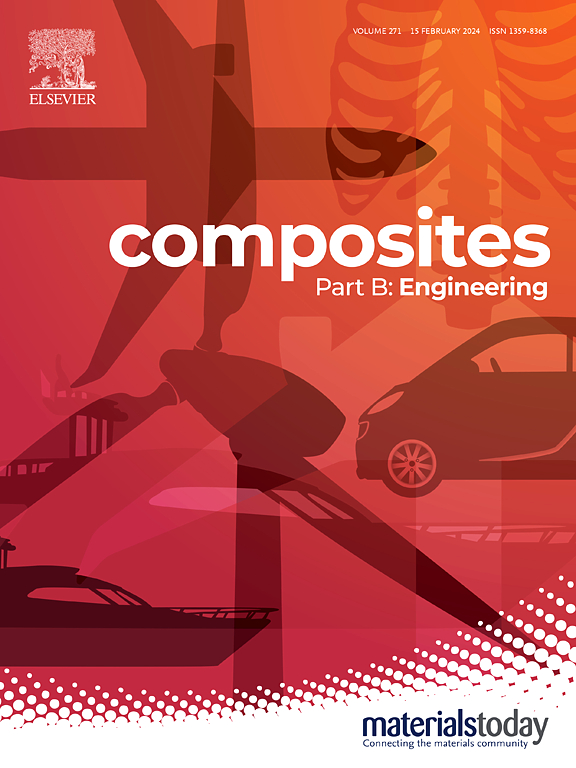A novel hierarchical structure of in-situ copper matrix composites reinforced with micro-clusters of TiB2 particles and nano-precipitates of B24Cu particles
IF 12.7
1区 材料科学
Q1 ENGINEERING, MULTIDISCIPLINARY
引用次数: 0
Abstract
Copper-based materials strengthened by a second phase are widely used in electrical industrial devices due to their high strength and high electrical conductivity. However, traditional uniformly dispersed materials have inherent limitations, which restrict their overall performance. Here, we develop a new hierarchical structure strategy to overcome this issue in copper-based materials by combining in-situ synthesized copper matrix composite powders with routine powder metallurgy processes. Based on the rapidly solidified microstructure of the composite powder, the submicron TiB2 particles with a high volume fraction formed by a liquid state in-situ reaction distribute as micro-clusters, while the nano-precipitates of B24Cu particles with high thermal stability precipitates during the sintering stage and is dispersive and homogeneously distributed. This novel hierarchical structure exhibits extraordinary work hardening capability and forms a network of low electrical resistance regions, thus leading to copper matrix composites with an ultimate tensile strength of 926 MPa and electrical conductivity as high as 79.8 % International Annealed Copper Standard, which is superior to numerous copper-based materials reinforced with ceramic second phases. The results will provide fundamental insights for the structural design of second phase strengthened copper-based materials.
求助全文
约1分钟内获得全文
求助全文
来源期刊

Composites Part B: Engineering
工程技术-材料科学:复合
CiteScore
24.40
自引率
11.50%
发文量
784
审稿时长
21 days
期刊介绍:
Composites Part B: Engineering is a journal that publishes impactful research of high quality on composite materials. This research is supported by fundamental mechanics and materials science and engineering approaches. The targeted research can cover a wide range of length scales, ranging from nano to micro and meso, and even to the full product and structure level. The journal specifically focuses on engineering applications that involve high performance composites. These applications can range from low volume and high cost to high volume and low cost composite development.
The main goal of the journal is to provide a platform for the prompt publication of original and high quality research. The emphasis is on design, development, modeling, validation, and manufacturing of engineering details and concepts. The journal welcomes both basic research papers and proposals for review articles. Authors are encouraged to address challenges across various application areas. These areas include, but are not limited to, aerospace, automotive, and other surface transportation. The journal also covers energy-related applications, with a focus on renewable energy. Other application areas include infrastructure, off-shore and maritime projects, health care technology, and recreational products.
 求助内容:
求助内容: 应助结果提醒方式:
应助结果提醒方式:


